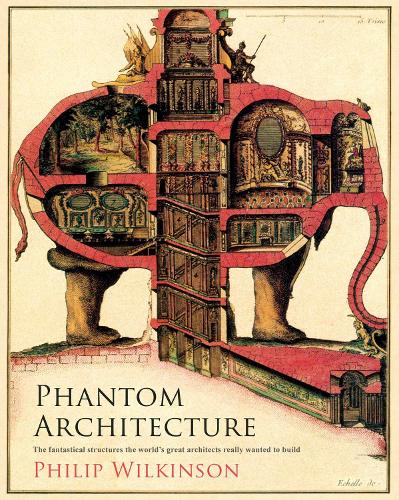
Phantom Architecture
Publishing Details
Phantom Architecture
By (Author) Philip Wilkinson
Simon & Schuster Ltd
Simon & Schuster Ltd
1st November 2017
2nd November 2017
United Kingdom
Classifications
General
Non Fiction
Individual architects and architectural firms
History of architecture
720.9
Physical Properties
256
Width 189mm, Height 246mm
Description
'60 fantastical structures described and illustrated in this colourful and highly entertaining book.' The Sunday Times
'If you cant think of a present for the armchair architect in your life well, problem solved' The Daily Telegraph
'These ghostly architectural echoes entrance the reader.' The Field
This is a lavishly illustrated book of wonder for the dreamer in your life The Metro
A skyscraper one mile high, a dome covering most of downtown Manhattan, a triumphal arch in the form of an elephant: some of the most exciting buildings in the history of architecture are the ones that never got built.
These are the projects in which architects took materials to the limits, explored challenging new ideas, defied conventions, and pointed the way towards the future. Some of them are architectural masterpieces, some simply delightful flights of fancy. It was not usually poor design that stymied them politics, inadequate funding, or a client who chose a safe option rather than a daring vision were all things that could stop a project leaving the drawing board.
These unbuilt buildings include the grand projects that acted as architectural calling cards, experimental designs that stretch technology, visions for the future of the city, and articles of architectural faith. Structures likeBuckminster Fullers dome over New York or Frank Lloyd Wrights mile-high tower can seem impossibly daring. But they also point to buildings that came decades later, to the Eden Project and the Shard.
Some of those unbuilt wonders are buildings of great beauty and individual form like Etienne-Louis Boulles enormous spherical monument to Isaac Newton; some, such as the city plans of Le Corbusier, seem to want to teach us how to live; some, like El Lissitskys horizontal skyscrapers and Gauds curvaceous New York hotel, turn architectural convention upside-down; some, such as Archigrams Walking City and Plug-in City, are bizarre and inspiring by turns. All are captured in this magnificently illustrated book.
